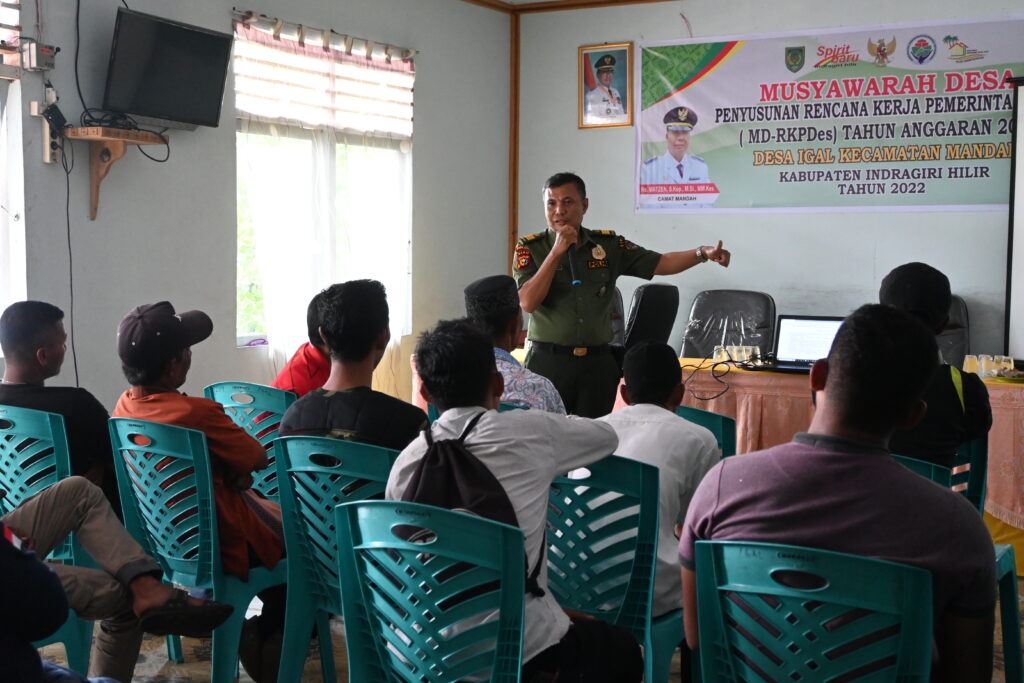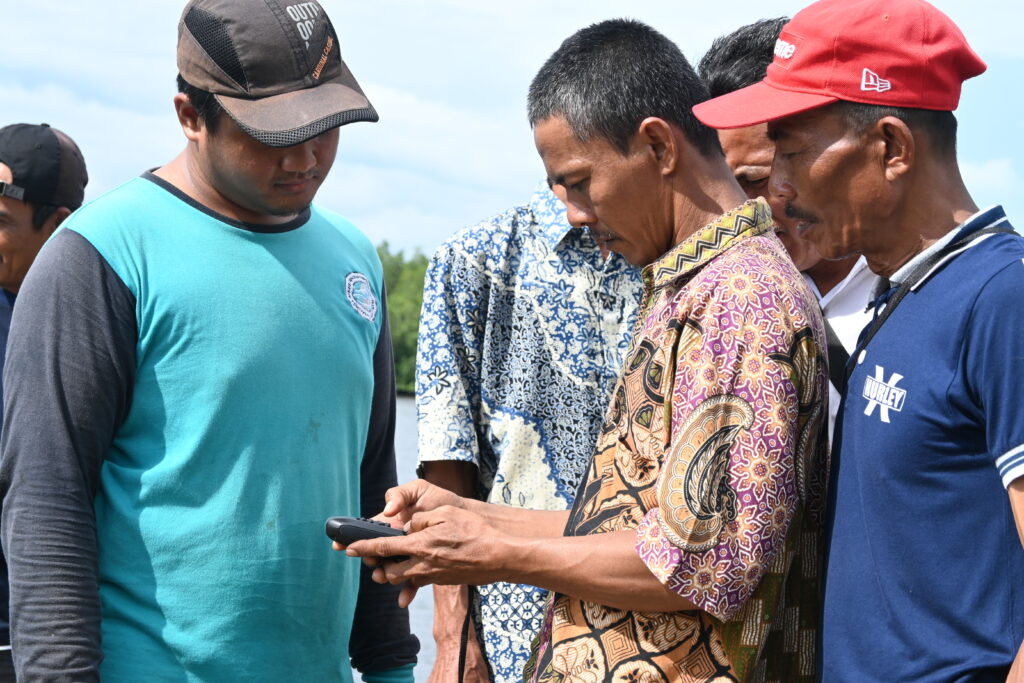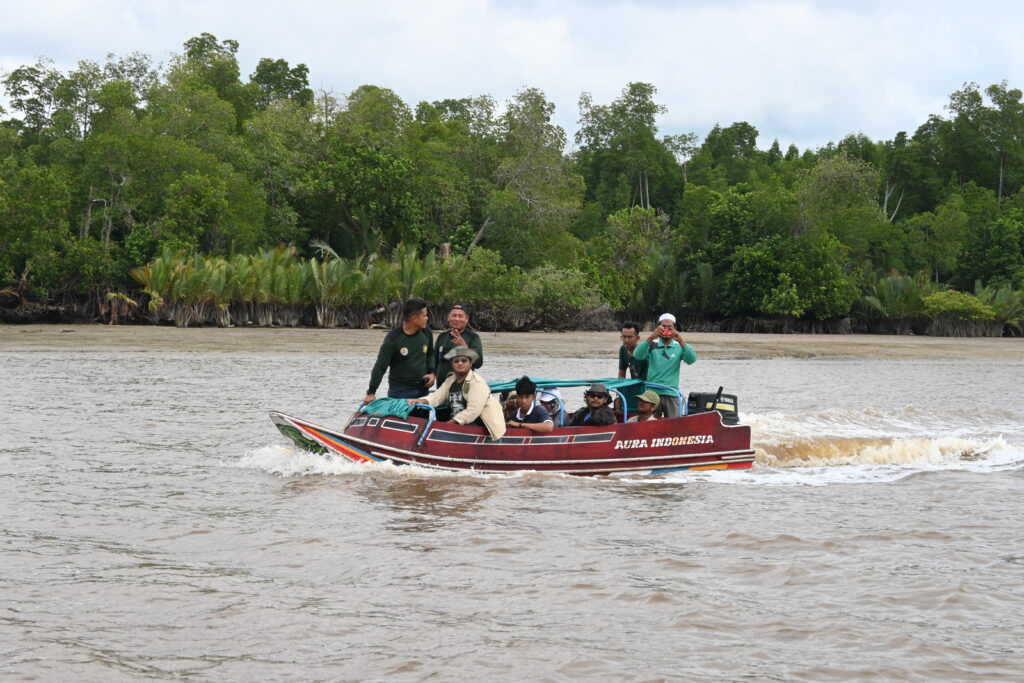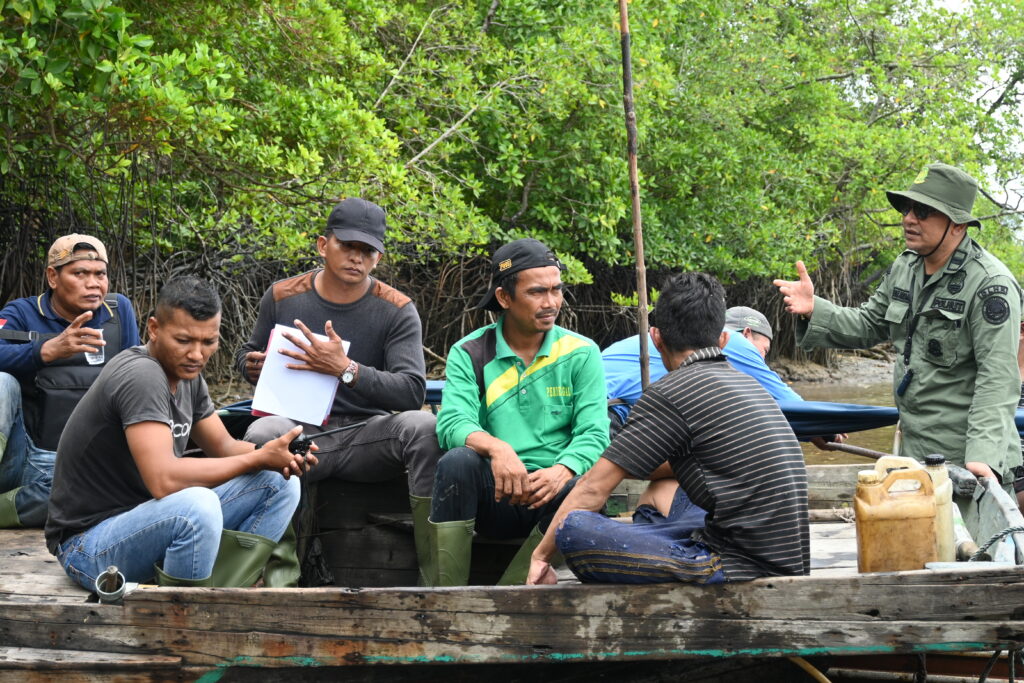The years 2020 to 2024 are set by the Government of the Republic of Indonesia as the period for the Acceleration of National Mangrove Rehabilitation. Through Presidential Decree 120/2020 concerning the Peat and Mangrove Restoration Agency, it is targeted that 600,000 hectares of mangrove areas will be rehabilitated during the four-year period. This effort to preserve the mangrove ecosystem needs to be welcomed by all parties in all sectors and layers, from the government to the community at the site level.
A special strategy is needed to ensure that mangrove and coastal sustainability are also implemented and implemented up to the site/village level. It is important to carry out community-based monitoring and supervision of natural resources (SDA) in mangrove, watersheds, and coastal landscapes. The participation of local communities in natural resource monitoring activities can ensure that the day-to-day monitoring system is implemented effectively. Community involvement will also overcome the challenge of the lack of human resources (HR) in authorized agencies, including the Forestry Police (Polhut) at the Environment and Forestry Service (DLHK) and marine and fisheries supervisors at the Marine and Fisheries Service (DKP).
A good monitoring system for the management of mangrove and coastal ecosystems is a powerful tool to improve forest and coastal protection efforts in accordance with local community values. In addition, this step also facilitates management that can adapt to changes. And of course, will strengthen the relationship between the parties and community groups. Monitoring and evaluation of the effective collaborative management of mangrove ecosystems can contribute to improved management in the future as well as the achievement of local, national and global conservation and development goals.
In order to strengthen the community-based natural resource monitoring system, particularly in Mandah District, Indragiri Hilir Regency, Riau, the Mandah Forest Management Unit (KPH) and the Blue Forests Foundation collaborated to carry out Capacity Building and Patrol Assistance activities. This activity, which is supported by UK-AID through the Pesisir Biru Consortium, has been implemented since July 2022.
On 25-30 August 2022, Capacity Building and Patrol Assistance activities were carried out again for SDA monitoring groups in two villages in Mandah Sub-district, namely Pulau Cawan Village and Pulau Cawan Village. Igal Village. Based on the identification of the problem, in these two villages cases of environmental violations occurred in the form of illegal logging (illegal logging) of mangrove wood and fishing using poison. These two problems have an impact on the destruction of ecosystems and the livelihoods of the people of the two villages located in the mangrove forest and coastal areas of Indragiri Hilir.

In this activity, for two days, each group was given an explanation about the importance of the community’s role in monitoring natural resources at the village level. The material about the Polhut Partner Community (MMP) was delivered by Salman Drajat Sitompul who is the Forestry Police (Polhut) of KPH Mandah. In this session, it is explained what MMP is and its duties in supporting the Forestry Police in carrying out the task of monitoring forest areas.
“MMP is a community group around forest areas whose task is to assist the Forestry Police in carrying out forest monitoring and protection. In carrying out its duties, the MMP is under the coordination, guidance, and supervision of the supervisory agency, namely the DLHK (Environmental and Forestry Service),” said Salman in his explanation of the material.
In order to prepare for the implementation of natural resource monitoring activities, the group is also accompanied by the use of supporting equipment. The equipment used in the supervision of natural resources includes GPS (global positioning system communication tools handy talky, cameras, and several supporting applications. In addition, to record information when conducting natural resource monitoring, the group was also introduced to a form or sheet for filling out patrols. This form is used to collect information about the condition of forests, plants and animals. There is also an accidental form that is filled out when the group discovers a crime while carrying out surveillance and patrolling.
Prior to the implementation of natural resource monitoring, the group is invited to prepare guidelines or SOPs for participatory natural resource monitoring. This SOP is prepared according to the needs of the group and the conditions of the location where the supervision is carried out. The results of group discussions with the facilitators of KPH Mandah and the Blue Forests Foundation, broadly speaking, the resulting SOP is divided into three parts, namely, preparation, implementation, and preparation of monitoring reports.

“With this SOP, we hope to be a guide for the group in carrying out forest and river monitoring tasks in our village. Of course, the group still expects direction from the Forestry Police (KPH Mandah) so that we can carry out surveillance in accordance with the rules,” said Ridwan, Head of the Igal Village Community-Based Natural Resources Monitoring Group.
A briefing on the preparation of supervision is also carried out the day before the implementation of the activity. Things to be prepared include time and location, transportation, logistics, and the division of roles for each group member.
“The locations targeted for surveillance are the ones we usually find mangrove logging and fish poisoning. With this supervision, we hope to provide socialization or awareness to the perpetrators of logging and poisoning,” said Said Aziz, Head of the Cawan Island Community-Based Natural Resources Supervisory Group.
In practice, supervision and patrols in Pulau Cawan Village found the use of fishery products by fishermen from other villages. The group did not find any fishing activity using poison or destructive fishing gear. Likewise, mangrove logging activities have not been found by the group.

In addition to monitoring activities on the use of natural resources, the group in Pulau Cawan Village also collects data on the condition of animals and plants. This data collection is carried out by means of observation along the river that is passed. The group succeeded in identifying various types of birds and marine animals which are commodities for fishermen.
Surveillance activities in Igal Village succeeded in finding mangrove logging activities for charcoal-making needs. The Igal Village Community-Based Natural Resources Supervisory Group conveyed an appeal for prohibiting the cutting down of mangrove forests, especially in river border areas.

“If you cut down on the banks of the river, the land can slide. This river can be wider and silting occurs. If that’s the case, we the community will also be the ones who will be harmed,” explained Ridwan to the alleged perpetrators of logging mangrove trees.
In this supervision, the group carried out preventive activities, in the form of socialization and appeals not to damage forest and aquatic ecosystems.
The results of the monitoring of natural resources carried out in two villages in Mandah Sub-district are then stated in the form of a monitoring report. Violation activities found are recorded in a complete report journal with documentation of coordinates and photos. The results of observations in the form of potential natural resources in the form of animals and plants are also recorded in the journal report.
The report on the results of the SDA supervision will then be forwarded to the interested parties, such as the respective Village Heads, the Forestry Police of KPH Mandah, and the UPT PSDKP Region 1 Tembilahan. It is hoped that the report can become participatory information related to natural resource utilization activities that will be followed up in accordance with the applicable laws and regulations.

 by Blue Forests
by Blue Forests